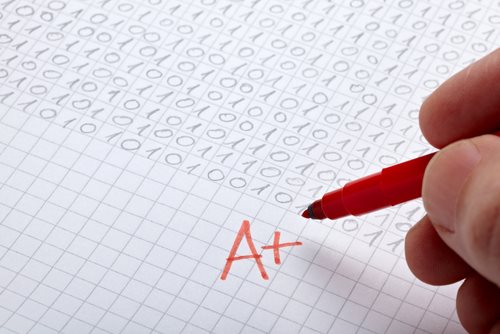Understanding The Importance of Education




What is Adult Education?
Adult education refers to the practice of teaching and educating adults. Adult education, in most jurisdictions, is delivered in the work environment, through an extension of an academic institution or school of continuing education. In addition to the workplace, other environments which promote or offer adult education are community colleges, folk high schools and lifelong learning centers.
The practice of Adult Education is typically referred to as a “Training and Development” medium and is often associated with professional or work-related development. Adult education is held separate from vocational education, which predominantly focuses on the teaching of a workplace-based skill, as a result of the more general implications.
In addition, adult education is also held in contrast from non-formal adult education, which includes learning skills or the delivery of resources to improve or augment personal development.
Characteristics of Adult Education:
Adult education programs can take the form of numerous classroom or educational settings. For instance, adult education programs may provide one to one tutoring and small group sessions for individuals who possess 6th grade or below educational levels. Public libraries, various school systems and some non-profit organizations are the typical institutions that provide these environments throughout the country.
These programs, including various educational centers and community colleges, will receive grants from Welfare and Unemployment departments to deliver their training to those individuals who are recipients of welfare and unemployment.
These adult education providers help these individuals gain life and work skills in order to facilitate their return to working society. In addition to those individuals receiving government assistance, adult education programs are also made available to ex-offenders for the purpose of expediting their assimilation into society.
How does an Adult Education program differ from other types of Educational Institutions?
The process of educating adults will differ from educating children in a number of ways. Arguably the most important difference is that adults already possess an accumulated level of knowledge, both in the form of institutionalized educational programs and the knowledge they have gathered from their respective work experience.
In addition to the presence of an already established foundation of knowledge, another difference between adult education programs and child-based educational systems is that the majority of adult education is voluntarily. As a result of this characteristic, the majority of students who participate in adult education programs are self-motivated.
Adults, participating in adult education programs, will typically apply their knowledge in a practical fashion to learn in an effective fashion. Adults participating in these programs utilize a reasonable expectation that the knowledge gained will help them further their societal-based and employment goals.
The typical stereotype attached to adult education programs, specifically in the United States, is that of the high-school dropout who opts to return to school in order to complete general education requirements. Although this is a common form of adult education, is not to be taken for the singular form of adult education.
A fast-growing sector of adult education is English for Speakers of Other Languages; these courses are vital in assisting immigrants with only the acquisition of the English language, but also the acclimation process to the general culture of the United States. If you feel you are not learning the skills you sought out to contact an education lawyer to consult your case.


What is the Department of Education?
The United States Department of Education, also known as the ED, is a governmental organization and Cabinet-level department of the United States Federal Government.
The United States Department of Education, which was created by the Department of Education Organization Act and was signed into law by President Jimmy Carter on October 17, 1979—the United States Department of Education began to officially operate on May 16, 1980.
The Department of Education Organization Act officially divided the Department of Health, Education and Welfare into more segmented departments, including the Department of Education and the Department of Health and Human Services. When the modification was finalized, the Department of Education is administered by the United States Secretary of Education. Although the Department of Education is a full-functioning and funded governmental organization, it remains the smallest Cabinet-level department, with roughly 5,000 employees.
Functions of the Department of Education:
The most notable functions of the Department of Education, according to the organization’s mission statement, is to “establish policy for, administer and coordinate most federal assistance to education, collect raw data on schools in the United States and to enforce federal educational laws regarding privacy and civil rights.” The Department of Education, as a government body of the Federal Government, is not permitted nor attempts to, establish schools or colleges throughout the country.
Unlike the educational systems of other nations, education in the United States of America is decentralized (the school systems are funded and run on a local level). The federal government and its coordinating Department of Education, in the United States, is not primarily involved in determining educational standards or curricula—although this role has been augmented through the passing of the No Child Left Behind Act.
Following the passing of this legislation, the function of providing a curricula and establishing educational standards has been left to state and local school districts; if a local school system decides it needs aid in developing a curricula or funding, the federal government and more specifically the Department of Education, will act as an intermediary to bolster the school’s effectiveness. In general, however, the quality and effectiveness of an educational institution and their coordinating degrees is primarily maintained through an informal private process known as accreditation.
This process is implemented and maintained by the local school district itself; in accreditation, the Department of Education has no direct public jurisdictional control. In general, as a government body, the Department of Education aims to promote student achievement and the preparation for global competitiveness by fostering educational excellence and ensuring equal access. If you need legal advice and assistance, contact an education lawyer.



What are Education Grants?
Grants are streams of funding, offered by a government body or organization. There are several types of grants, which are delivered to organizations or individuals for the purpose of starting a business, providing an education or offering some sort of tangible good or service to bolster society’s well-being. Education grants, using this loose definition of grants, are an avenue of financing used to mitigate the cost of higher education. Education grants may be applied for by completing tuition assistance forms, which will ask for basic information concerning your personal finances. In some inctances education lawyer may assist on reviewing your case.
Types of Education Grants:
Private Education Grants:
Private education grants are funds (gifts of money) offered from private organizations to students. Unlike a loan, a private education grant is not repaid to the issuing organization—although same may require the fulfillment of state or federal taxes. Additionally, private education grants differ from public grants, in that they are not offered by the school itself or a governing body; instead, private education grants rely on funding from the private sector, such as endowments, company profits or private donations.
The majority of private education grants offer a need-based availability; meaning to receive consideration for a private education grant, the applicant must complete an application that offers financial disclosure. These forms of grants may be also issued on a merit-based scale. Applicants who supply information concerning their successes, community service, career goals and academic performance may be eligible to receive private funding.
In addition to need-based or merit-based grants, the majority of private education grants are awarded based on specific circumstances of the student; for instance, grants are commonly made available only to applicants of certain national origins, socioeconomic positions, races, or those with physical or mental disabilities.
Adult Education Grants:
These types of education grants refer to the extension of funds to qualified adults who wish to continue their education at a higher institution of learning. Adult education grants may be issued by a particular educational institution, a community organization—such as a charity–, private citizens, or a government entity. In the majority of instances, adult education grants are paid directly to the school where the adult student is enrolled—any funds left over after tuition and fees are fulfilled are made available to the student to help with books and other expenses directed towards the educational process.
There are several types of adult education grants; some are geared towards a particular course of study, such as education, music, business administration, or art. Music education grants typically require some type of credentials on the front end that would indicate that the applicant has the talent to successfully complete a degree program in this specific area. Other forms of adult education grants can be used with a number of different approve degree programs. Past academic performance is also crucial when applying for any type of adult education grants. Similar to a private education grant, adult education grants may also be issued on a need basis.
How do I get Grant Money for Education?
In most instances, an education grant is a specific amount of money offered to qualified students who are attending post-secondary education programs. The first place to look for information regarding education grants is your local university or college. Contact your admissions counselor, your student financial aid office or your program administrative coordinator. These offices will advise you concerning the different grants available, the application timelines and all supporting documentation requirements.
In order to receive grant money, you must meet specific application criteria; in general, there are two types of grants: merit based and hardship grants. Hardship grants are offered to help students who are struggling financially, while merit based grants are driven by academic or athletic success, combined with financial need.

